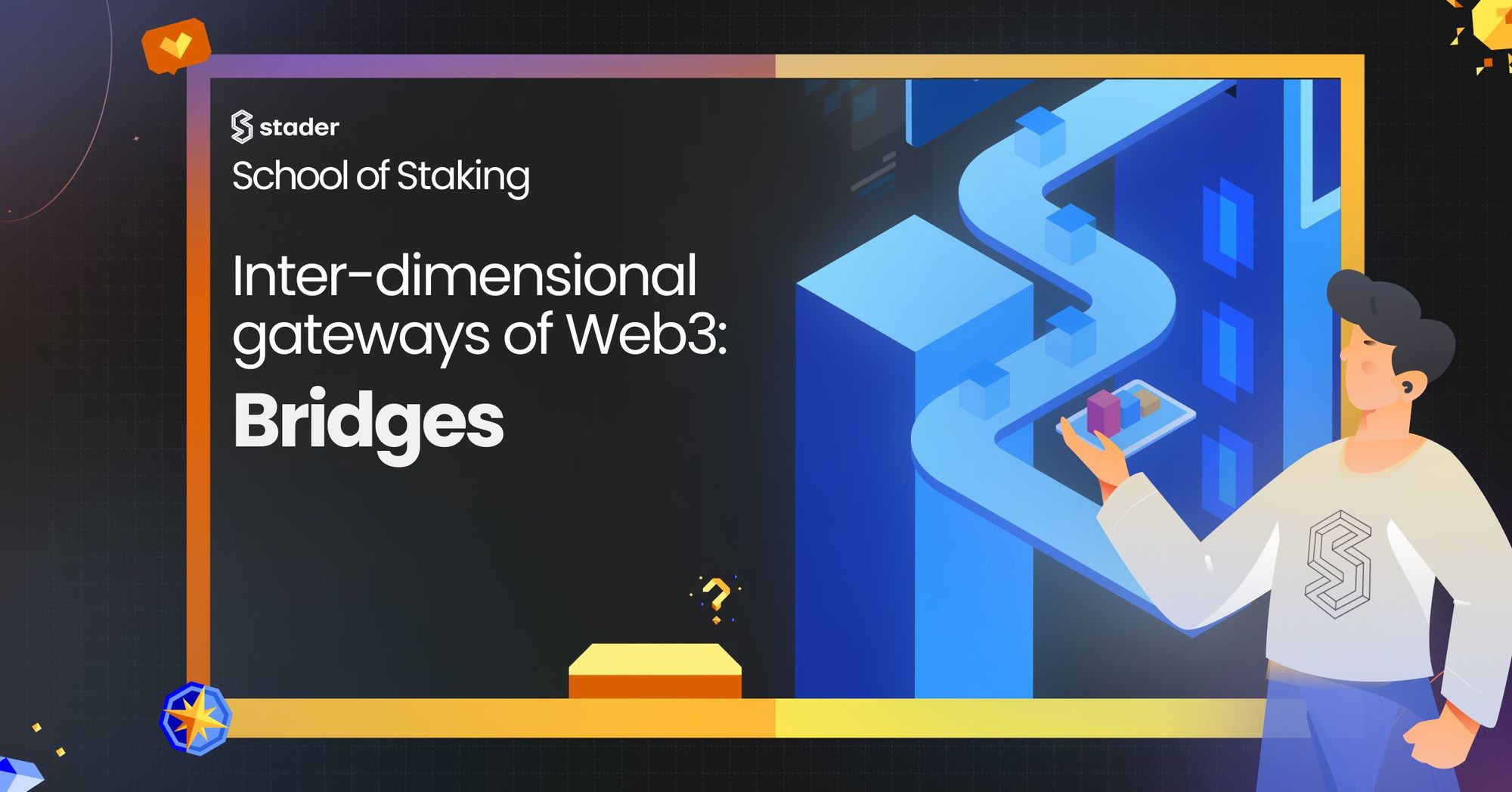Interdimensional Gateways of Web3: Bridges

Interdimensional travel has been a dream for many since a long time. Even though it is not a reality in our world yet, it exists in the world of DeFi. Bridges are the key to achieving interconnectivity between different blockchain networks, thus solving a major problem of isolation that existed before. In this blog post, we will explore the basics of bridges, their working, types, and advantages.
What are Bridges?
Every blockchain network has specific defining parameters unique to its network, which creates problems with interoperability. Bridges were created to solve this problem. Just like physical bridges, a blockchain bridge connects two separate networks. They can work in different ways and have also been referred to as a ‘cross-chain bridge’. By connecting two networks, they make it possible to execute the uninterrupted transfer of assets and information, exchange off-chain information and smart contract calls.
Types of Bridges
Depending on the network requirements, different variants of bridges are used. These are Trusted Bridges, Trustless Bridges, Unidirectional Bridges, and Bidirectional Bridges.
- Trusted Bridges: These bridges are operated by a trusted third-party. The users rely on this third-party to manage the exchange of assets between the two networks.
- Trustless Bridges: These bridges operate without the need for a trusted third-party. The exchange of assets is governed by smart contracts that automate the process.
- Unidirectional Bridges: These bridges allow the transfer of assets in one direction only. For example, from one network to another.
- Bidirectional Bridges: These bridges allow the transfer of assets in both directions between two networks.
Advantages of Bridges
Bridges offer better opportunities for increasing the number of users. Users can interact with other blockchain networks and their associated dapps. They can also rely on bridges to extract the best value from dapps on various blockchain networks. Bridges can also be used to mitigate the high fees and congestion that can occur on some networks.
An Example: Binance Bridge
Binance Bridge is a blockchain bridge that serves as a bidirectional bridge between Eth and BNB. It helps users utilize Ethereum-based assets on the BNB Smart Chain by wrapping tokens in the BEP-20 token standard.
Conclusion
The potential for blockchain bridges to rule the future of DeFi is immense. With the growth of blockchain bridge projects, the Web3 ecosystem will become stronger and more immersive for users. Bridges offer a solution to the problem of isolation between blockchain networks, and their various types and traits address unique user requirements. The future looks bright for the DeFi ecosystem with bridges connecting blockchains.